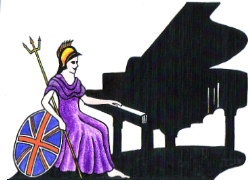Teachers, Accompanists and Piano Entertainers in the UK

UK Piano Page

Thatched Cottage
Lew
Witney, Oxfordshire OX182AZ
England
Shackell Pianos have been buying and selling
R/O The Old George
Fore St, Milverton
Taunton, Somerset TA4 1JU
England
Our Stock of new and reconditioned pianos has been
154 Sidwell Street
Exeter, Devon EX4 6RT
England
Founded in April 2007 and following on from the
I-Mex Business Park
Hamilton Road.
Longsight, Greater Manchester M13 0PD
England
We have a carefully selected range of fine quality
37 Ranelagh Street
Liverpool, Merseyside L1 1JP
England
Dawsons caters for all musical styles and for all
Music Festival for performers and guests Our 10th
18-06-2022 01:30PM
The Morecambe Bay Piano Group was set up to extend
11-12-2021 02:00PM
The Morecambe Bay Piano Group was set up to extend
08-01-2022 02:00PM
The Morecambe Bay Piano Group was set up to extend
12-02-2022 02:00PM